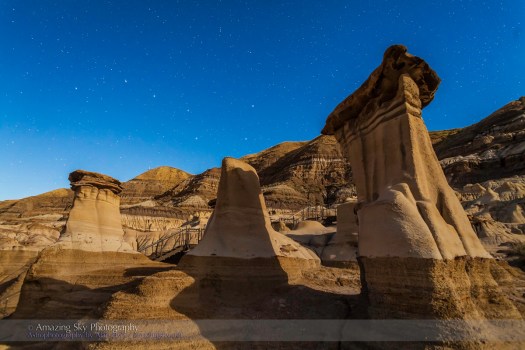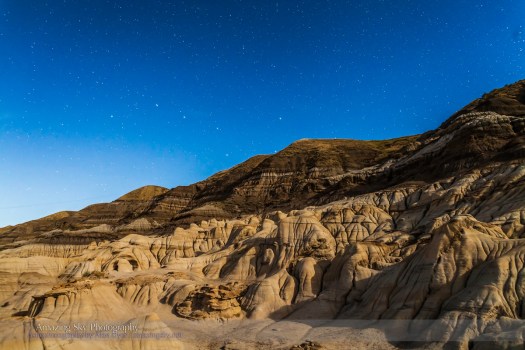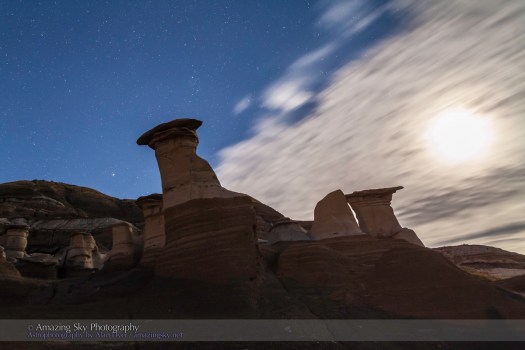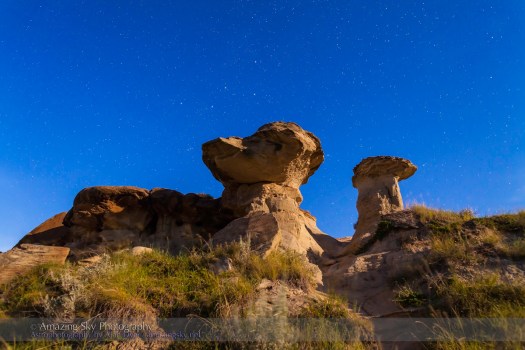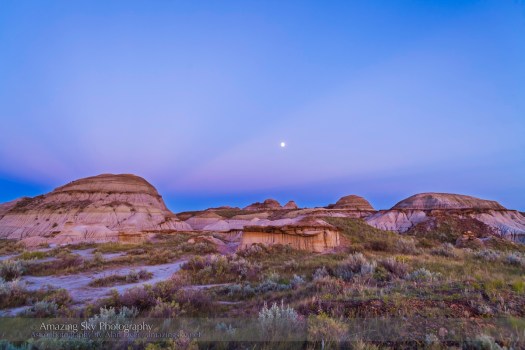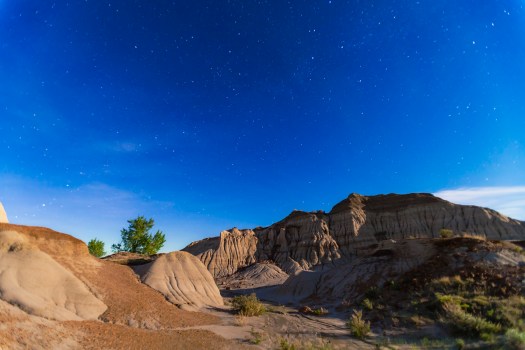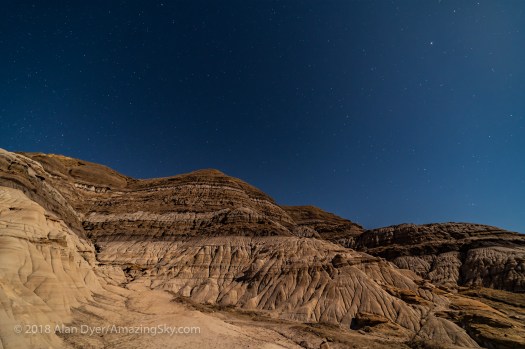
Clear nights and a waxing Moon made for great opportunities to shoot the Badlands under moonlight.
This has not been a great spring. Only now is the last of the snow melting here in Alberta.
But some mild and clear nights this week with the waxing gibbous Moon allowed me to head to the Red Deer River valley near where I live in Alberta for some moonlit nightscapes.
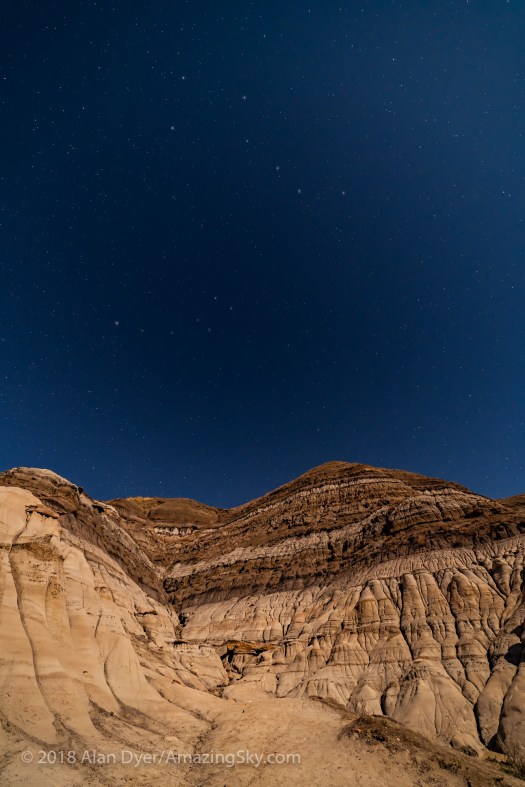
Here’s the Big Dipper high overhead as it is in spring pointing down to Polaris.
I shot this and some other images in this gallery with the new Sony a7III mirrorless camera. A full test of its astrophoto abilities is in the works.
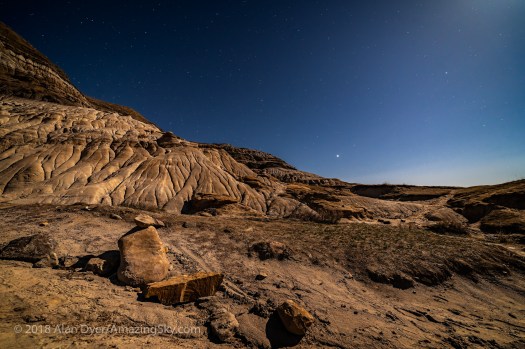
This is Jupiter rising, with the Moon lighting the sky, and illuminating the landscape. Moonlight is the same colour as sunlight, just much fainter. So while this might look like a daytime scene, it isn’t.
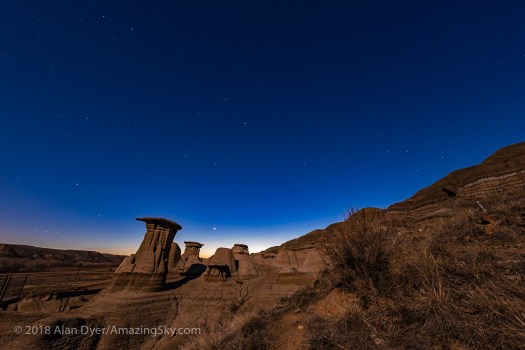
This is Venus setting in the evening twilight at the Hoodoos on Highway 10 near Drumheller. The winter stars are setting into the west, to disappear for a few months.
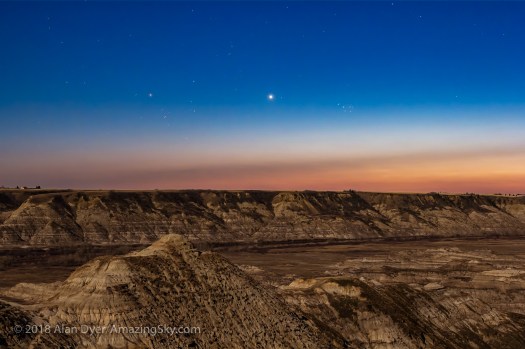
Here’s Venus in closeup, passing between the Hyades and Pleiades star clusters in Taurus, low in the twilight over the scenic Horsethief Canyon area of the Red Deer River.
While Venus is climbing higher into our evening sky this spring, the Pleiades, Hyades and all the winter stars are fast disappearing from view.
We say goodbye to winter, and not a moment too soon!
— Alan, April 28, 2018 / © 2018 Alan Dyer / AmazingSky.com


